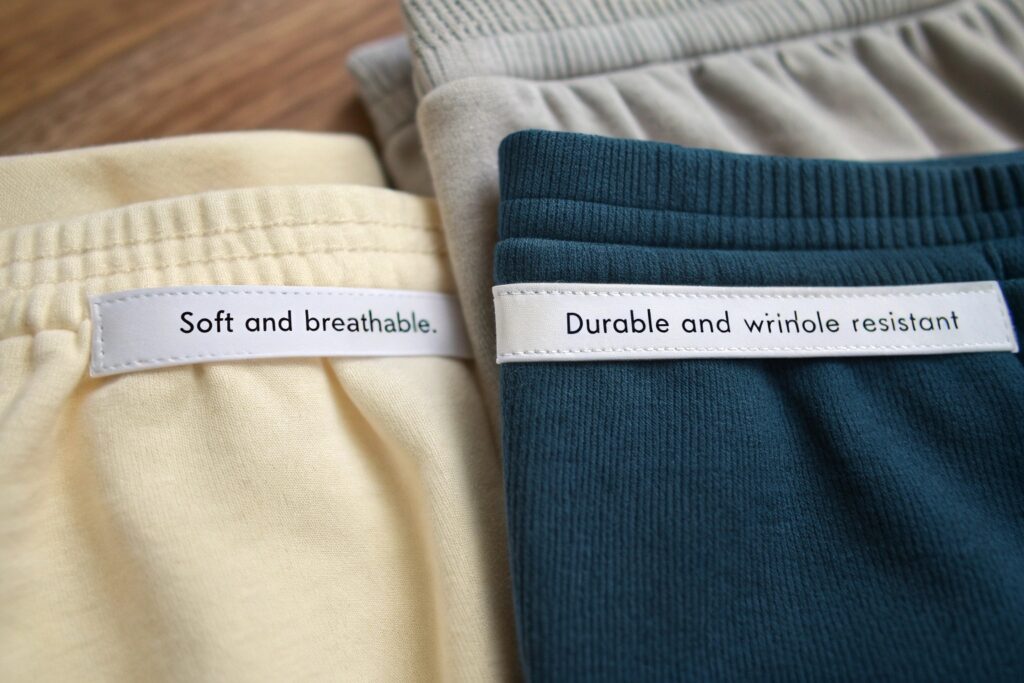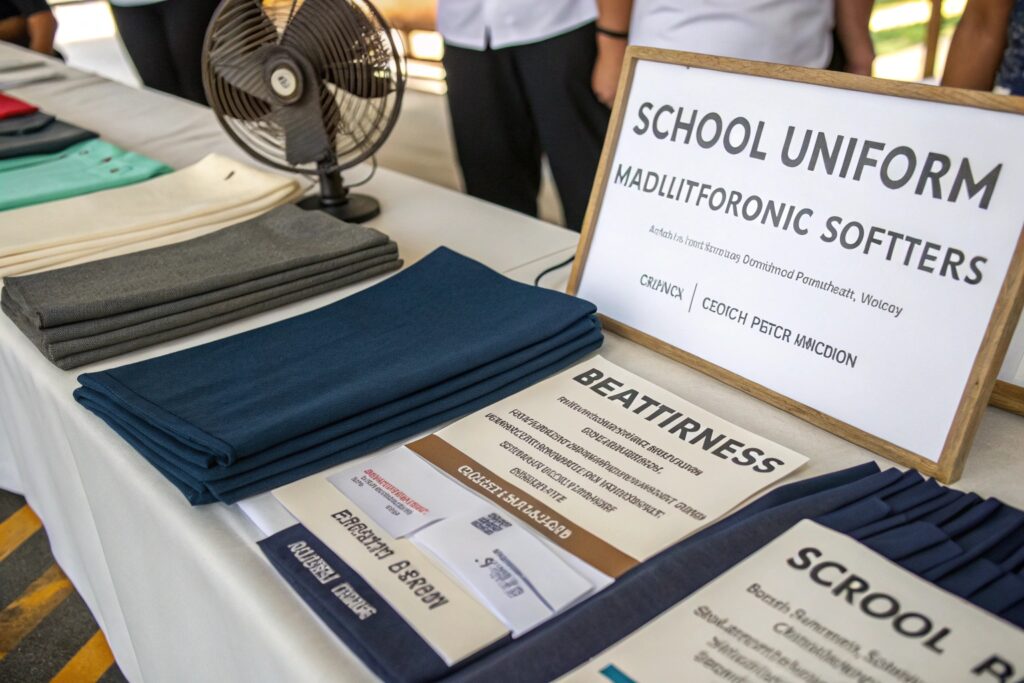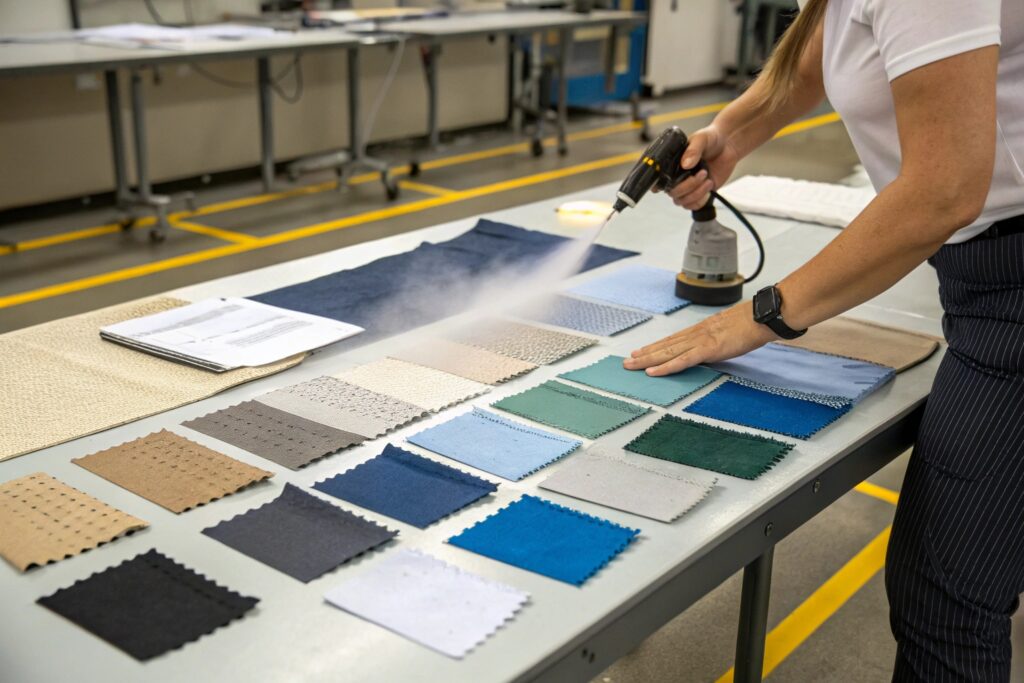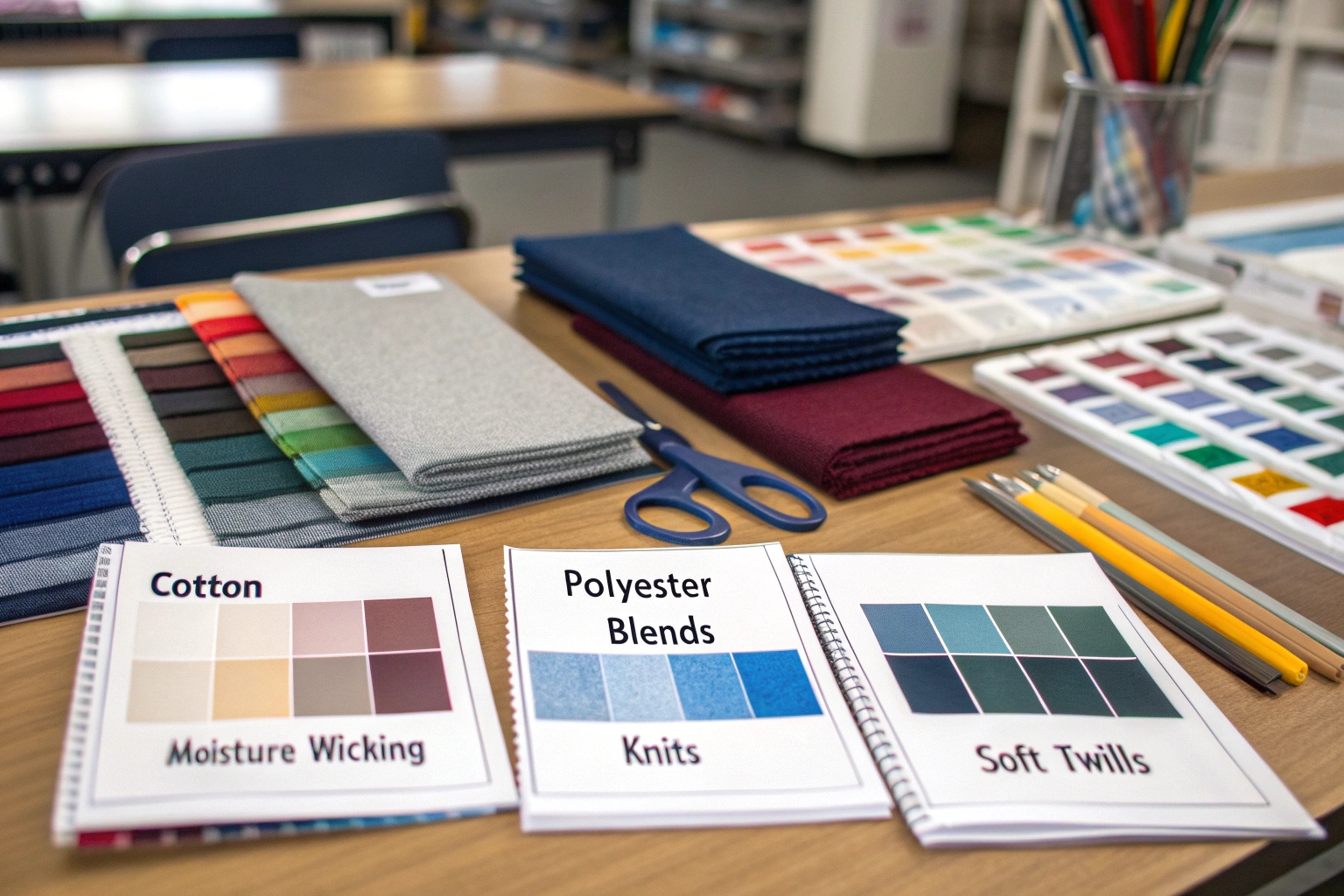School uniforms should do more than meet a dress code—they should help kids feel good, stay cool, and move freely all day.
The best uniform materials for student comfort are breathable, soft, and durable blends like cotton-polyester mixes or moisture-wicking fabrics, depending on climate and activity level.
Let’s break down the most comfortable, practical, and long-lasting options for schoolwear.
Is cotton or polyester better for school uniforms?
These are the two most common fabrics used—but which is truly better?
Cotton offers breathability and softness, while polyester adds wrinkle-resistance and durability. The best school uniforms often use a cotton-polyester blend for balance.

How do cotton and polyester compare?
Let’s compare both fabrics side by side:
| Feature | 100% Cotton | 100% Polyester |
|---|---|---|
| Comfort | ✅ Soft and breathable | ❌ Can trap heat |
| Wrinkle Resistance | ❌ Wrinkles easily | ✅ Holds shape well |
| Moisture Wicking | ❌ Absorbs moisture slowly | ✅ Dries quickly |
| Durability | Moderate | High |
| Skin Sensitivity | ✅ Hypoallergenic | ❌ May irritate some skin |
Cotton is ideal for younger students or hot climates, especially when comfort is the priority. But polyester works better for uniforms that must endure repeated washing and rough play.
That’s why a 65/35 poly-cotton blend is often the industry standard—it’s soft enough for daily wear and strong enough to last a full school year.
Which fabric keeps students cool and comfortable?
Comfort is essential—especially for active kids or schools in warmer regions.
Breathable fabrics like cotton, rayon, and moisture-wicking polyester blends help keep students cool, dry, and comfortable during long school days.

What fabric properties matter for temperature control?
Comfort isn’t just about softness. It also depends on:
- Breathability: Allows air to flow through fabric
- Moisture-wicking: Pulls sweat away from skin
- Lightweight construction: Reduces heat retention
- Soft texture: Reduces friction and irritation
Here’s how common fabrics perform:
| Fabric Type | Breathability | Moisture Wicking | Ideal For |
|---|---|---|---|
| Cotton | ✅ Excellent | ❌ Low | Warm climates, sensitive skin |
| Polyester | ❌ Low | ✅ Excellent | Sports, cooler mornings |
| Rayon/Viscose | ✅ High | ✅ Medium | Dress shirts, blouses |
| Cotton-Poly Blend | ✅ Good | ✅ Good | Year-round uniforms |
In hot, humid regions, lightweight cotton pique or poplin keeps students cooler. In colder climates, brushed poly-cotton fleece may be more comfortable and insulating.
I always suggest testing samples in real conditions—kids playing outside, walking to school, or attending indoor classes—to see what works best.
What materials last longest in daily school use?
Durability matters when uniforms are washed weekly (or daily) and worn through every recess and classroom spill.
Polyester and poly-cotton blends last longest in school settings due to their resistance to fading, tearing, shrinking, and wrinkling.

What makes a uniform fabric long-lasting?
- Tensile Strength – Fabric should resist tears under stress
- Color Fastness – Holds dye through repeated washes
- Shrink Resistance – Keeps size and shape after drying
- Abrasion Resistance – Doesn’t pill or thin with friction
- Low Wrinkle Retention – Maintains neatness without ironing
Here’s how common materials rank in durability:
| Fabric Type | Shrink Resistance | Fade Resistance | Overall Durability |
|---|---|---|---|
| 100% Polyester | ✅ High | ✅ High | ✅✅✅ |
| Cotton-Poly Blend | ✅ Medium-High | ✅ Medium-High | ✅✅ |
| 100% Cotton | ❌ Low | ❌ Low | ✅ (only with care) |
Blended fabrics like 65% polyester / 35% cotton twill or 50/50 jersey knits are most popular for trousers, polos, and jumpers. They maintain structure and color even after 50+ washes.
Are breathable fabrics best for kids’ uniforms?
With active school days, recess, and unpredictable weather—comfort can’t be compromised.
Yes, breathable fabrics are best for kids’ uniforms because they help regulate body temperature, reduce sweating, and prevent skin irritation, especially during play and physical education.

What makes a fabric “breathable”?
- Open weave structure (like cotton poplin or mesh)
- Low synthetic content
- Moisture regulation ability
- Quick drying
Parents and school uniform buyers now prefer fabrics that breathe like cotton but perform like synthetics—especially in polos, P.E. kits, and dresses.
Best breathable uniform fabrics:
| Fabric | Ideal Use | Comfort Level |
|---|---|---|
| Cotton Piqué | Polo shirts, light sweaters | ✅✅✅ |
| Polyester Mesh | P.E. sets, active uniforms | ✅✅ |
| Rayon-Spandex Blend | Uniform tops for girls | ✅✅ |
| Cotton-Poly Interlock | All-season polos and t-shirts | ✅✅✅ |
At Fumao, we often recommend pre-washed cotton-rich blends for maximum softness and airiness—without sacrificing durability or structure.
Conclusion
The best student uniforms use breathable, blended materials that balance comfort, durability, and ease of care. Whether you’re sourcing for a school or designing your own line, cotton-poly blends and soft woven fabrics are often the smartest, kid-friendly choice.










